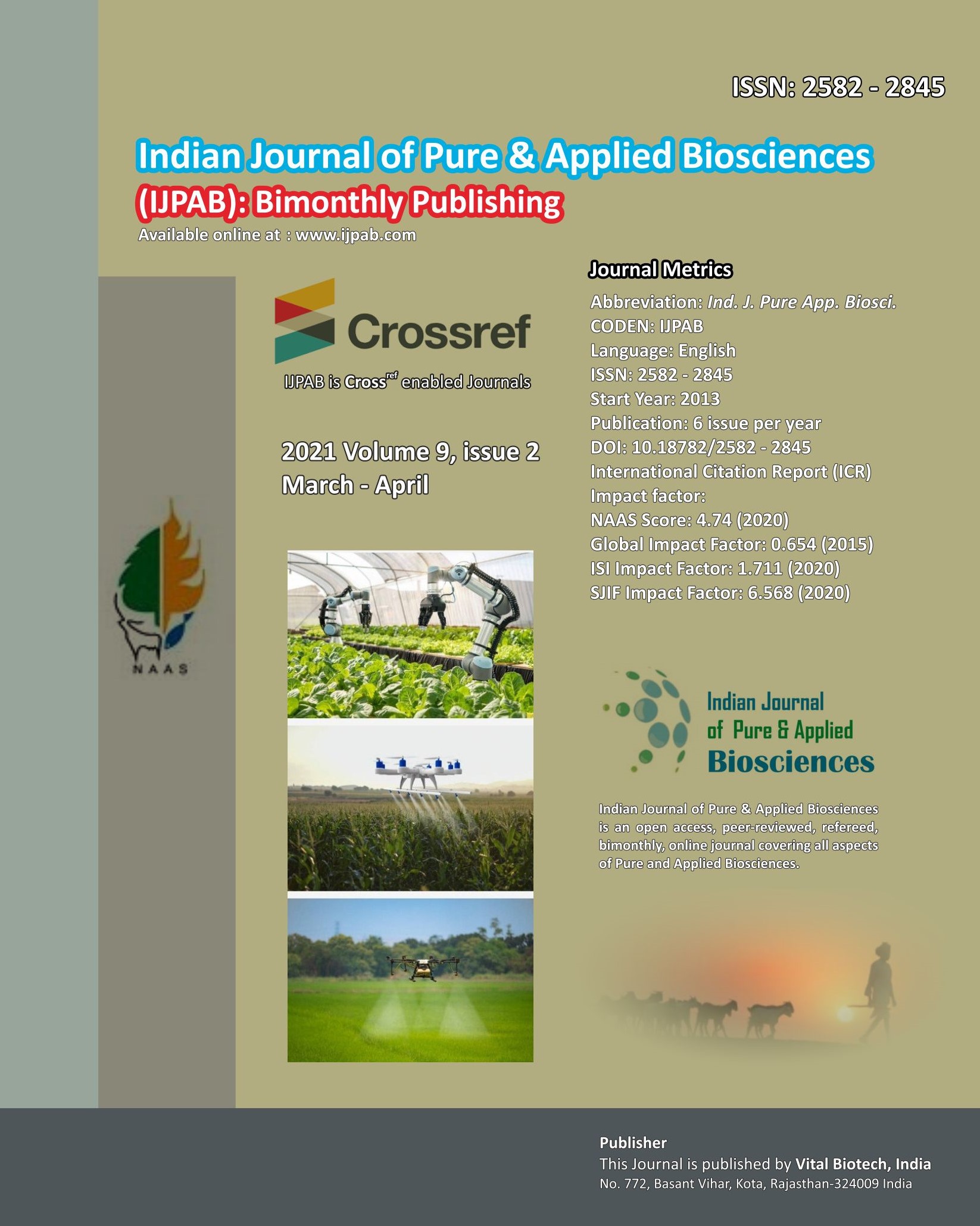
-
No. 772, Basant Vihar, Kota
Rajasthan-324009 India
-
Call Us On
+91 9784677044
-
Mail Us @
editor@ijpab.com
Indian Journal of Pure & Applied Biosciences (IJPAB)
Year : 2021, Volume : 9, Issue : 2
First page : (262) Last page : (271)
Article doi: : http://dx.doi.org/10.18782/2582-2845.8652
A Detailed Review Study of Zinc Involvement in Animal, Plant and Human Nutrition
Aqarab Husnain Gondal1* ![]() , Asma Zafar1, Dua-e-Zainab1, Muhammad Danish Toor2, Sidra Sohail1, Sabeela Ameen1, Abu Bakar Ijaz1, Bisma Imran Ch1, Irfan Hussain1, Sharjeel Haider1, Iftikhar Ali Ahmad1, Bushra Rehman1, Noman Younas1
, Asma Zafar1, Dua-e-Zainab1, Muhammad Danish Toor2, Sidra Sohail1, Sabeela Ameen1, Abu Bakar Ijaz1, Bisma Imran Ch1, Irfan Hussain1, Sharjeel Haider1, Iftikhar Ali Ahmad1, Bushra Rehman1, Noman Younas1
1Institute of Soil and Environmental Sciences, University of Agriculture, Faisalabad 38040, Pakistan
2European University of Lefke, Institute of Graduate Studies and Research,
Department of Environmental Sciences Northern Cyprus TR-10 Mersin Turkey
*Corresponding Author E-mail: aqarabhusnain944@gmail.com
Received: 6.03.2021 | Revised: 10.04.2021 | Accepted: 16.04.2021
ABSTRACT
This present review critically discusses the detailed study of zinc (Zn) involvement in animal, plant and human nutrition. The status of micronutrients in food is unquestionable. Among all micronutrients, Zn is a vital component whose importance to nutrition is gradually more valued, and shortage may play a prominent role in the appearance of the disease. It is a crucial micronutrient for the development of living thing (animal, plant and human) and its absence persuaded poor outcome with increases the severity and possibility of a range of infections and constrained the physical growth in animal, plant and human. The Zn is essential for synthesizing many coenzymes, with three prominent biotic roles, structural, regulatory, and catalyst. Zn is also a necessary element of gene manifestation. In both agriculture and industry, Zn is widely used as fertilizers and in handling other metals as fortification against oxidization. Furthermore, Zn is involved in various physical functions; its insufficient quantity will decrease crop yield. It can also reduce the deadly effect of pollutants in plants by increasing the photosynthesis rate and decreasing oxidative anxiety. Zn also provides resistance to crop against water-deficient conditions.
Keywords: Zinc deficiency, Human Malnutrition, Animal Diseases, Plant Growth.
Full Text : PDF; Journal doi : http://dx.doi.org/10.18782
Cite this article: Gondal, A. H., Zafar, A., Zainab, D., Toor, M. D., Sohail, S., Ameen, S., Ijaz, A. B., Imran B.Ch, Hussain, I., Haider, S., Ahmad, I. A., Rehman, B., & Younas, N. (2021). A Detailed Review Study of Zinc Involvement in Animal, Plant and Human Nutrition, Ind. J. Pure App. Biosci. 9(2), 262-271. doi: http://dx.doi.org/10.18782/2582-2845.8652

